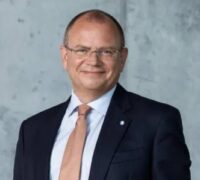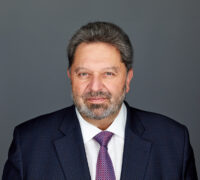To try to gain a bigger slice of the revenue pie, Vestas, which develops onshore and offshore turbines as well as having a service maintenance business, has branched out into early development of wind energy projects. This involves sourcing new projects and gaining permits as part of a revenue-sharing model with customers.
A further headwind for Vestas, however, has been the slow permitting process in Europe, which is acting as a brake on Andersen’s and Vestas’ green energy transition ambitions. Despite the European Union needing to build an average of 30 GW of new wind energy capacity a year to meet its 2030 climate and energy goals, it only approved permits for 15 GW of capacity in 2022, despite having a permitting backlog of 80 GW.
Andersen favors a maximum time limit for local authorities to approve permits, which would also prevent the technology from getting outdated before it has even been approved. He sees consumer sentiment turning more positive towards wind turbines, as customers, scared by the energy price shock caused by the war in Ukraine, seem increasingly willing to back measures that could reduce their utility bills.
Another challenge is the relative immaturity of the offshore wind industry. Over the past two decades, manufacturers have been caught in an “arms race” to build ever bigger and more efficient offshore wind turbines, ultimately throwing “silly money” at the process, said Andersen. Instead, there needs to be a better balance between continued development and profitability for the industry to achieve industrial scale in a financially sustainable way.
With the current generation of offshore wind turbines now capable of providing electricity to 20,000 households, he expects that there will be a slowdown in the technological arms race over the next few years.
An orderly succession
Before taking over as CEO, Andersen sat on Vestas’ board for six years, something he considers an asset. When he started the job, he spent three months with his predecessor Anders Runevad, who is now chairman of the board. By traveling to meet various customers together, they cemented an excellent working relationship.
This is Andersen’s second gig as CEO, having previously run Hempel, a global supplier of coatings and paintings. He remains motivated by creating a shared identity and purpose across Vestas’ 29,000 employees operating across 86 countries.
Nevertheless, he acknowledges that being CEO of a large corporation today is a relentless, 24/7, 365-day job that involves managing multiple stakeholders and navigating political interests. His biggest challenge is trying to instill some predictability into a business that involves executing large-scale projects in more than 30 countries at any given time, and where shocks like the pandemic and the war in Ukraine magnify the industry’s sensitivity to the economic cycle.
So how does Andersen stop himself from getting worn down by the grind? He admits there is no work-life balance as a CEO but tries to integrate aspects of his personal life into his work by holding get-togethers with his team and their families several times a year. He also has a three-year corporate calendar and blocks out dates years in advance to enable him to optimize his travel schedule and book personal time.
Ultimately, Vestas’ purpose to contribute to a more sustainable future remains his biggest energizer.
“We’ve just seen a tenfold increase in our graduate applications in the last 24 months. And that’s a good sign that people are starting to follow their real purpose. So, for me, that gets me out of bed, and it gets me going in both a heartbeat and a passion for the business.”
Watch the full discussion to hear more from Henrik Andersen, including the importance of being physically present and authentic as a leader, the role of governments in driving regulation to accelerate the adoption of wind power, as well as where he sees the biggest growth opportunities.
YouTube

 Podcast available
Podcast available

 Podcast available
Podcast available